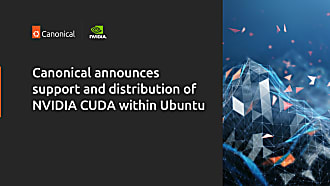Canonical
on 23 July 2012
As you might have heard from the blogosphere, we are going to start to ship our take on web apps. Let me take the opportunity to explain to you some of the reasoning behind them and some of their characteristics.
Why
I would split the why question in more parts.
Is the Web relevant? Today, the Web, besides being the best source for information, is also a major component in how we relate to one another. There are very few applications that don’t use the Web in one way or another.
Are web applications relevant on the Desktop? If you look at the first tabs of your browser window, chances are that these are tabs you keep open and glance at every now and then to check if a change has occurred. This is not optimal! Facebook and your webmail could (and should) be more integrated in your experience. Browsers acknowledged this problem a while ago by introducing desktop notifications and more compact tabs, but the shell itself is in the best position to provide such capabilities.
Are web applications also relevant to other form factors? It is true that in recent years there has been quite some hype about native applications for mobile platforms. While using a native toolkit can provide the developer some initial edge, the advantages quickly fade when more form factors or platforms need to be supported. The speed of how you can globally test changes, and the accessibility of the technology, made the web a very fast paced environment for innovation. Despite having evolved mainly through a consortium, web technologies, with their separation of content and representation, are in a very good position to support multiple screens.
Because of these reasons, it shouldn’t surprise you if the Facebook native application for iOS is rated with just 2 stars whereas the web version for mobile, in many aspects, works much better. The share-ability of the techniques will also make it so that compelling experiences will become more and more common outside of the native space.
Not just web links
One of the major critics about this project has been the comparison to simple web links. Web apps will be far from being simple web links. As a matter of fact, it has been our priority, from UX perspective, to blur the line between native applications and web apps. In fact, if we consider native applications heavily dependent on the Internet connection and web applications which can work offline, there is an obvious overlap. The demo you see today shows the current state of the project, which is already impressive, but in the coming months you will see how these will beautifully blend in the user app mental model.
Conclusions
Unity, thanks to its components (e.g.: Sound Menu, Notify OSD), offers a unique opportunity for web applications to integrate with the shell user experience. There will be design, technological and political challenges, but web technologies are here to stay!
More information is available in the official release post and in the detailed coverage from OMGUbuntu.



